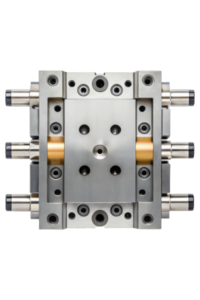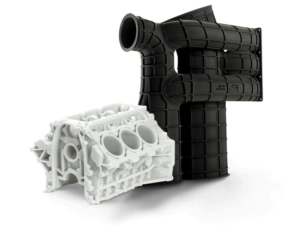The competitive and technology-driven aerospace industry is continuously looking for innovations that soar beyond the restrictions of conventional manufacturing processes. One such trailblazing technology that has transformed the aerospace manufacturing landscape is 3D printing. 3D printing, also known as additive manufacturing, has become the linchpin of creating components that are technically superior and economically viable.
In this extensive article, we demystify the impact of 3D printing on the aerospace sector. We explore its intricacies, the range of applications, and its future in one of the world’s most safety-critical industries. Let’s embark on a journey that explains the science and the art of 3D printing in aerospace engineering.
Unveiling Aerospace’s 3D Printing Revolution
The advent of 3D printing in aerospace has been a game-changer for manufacturers. It allows the creation of intricate geometries and offers designers the creative freedom to produce previously unattainable or prohibitively expensive shapes. Today, 3D printing is routinely used for manufacturing aircraft parts spanning from brackets to engine components, making aerospace lighter, more efficient, and arguably, safer.
The Capabilities of 3D Printing
The heart of 3D printing lies in its additive process—layer upon layer of material meticulously placed according to precise digital designs. This enables the construction of parts with high levels of complexity, structural integrity, and often, superior material properties. Whether it’s titanium alloys for high-stress conditions or lightweight polymers for cabin components, 3D printing can cater to diverse material requirements.
Unlike in traditional manufacturing, designs are not hampered by the need to create molds and dies. 3D printing liberates designers to push the boundaries of part complexity, creating organic shapes, lattices, and internal structures that distribute stresses more effectively, leading to stronger components.
Lightweighting and Performance Enhancements
A critical advantage lies in the ability to tailor the parts’ internal geometry to optimize weight without compromising strength, a concept known as ‘lightweight’. In an industry where every ounce counts, 3D printing techniques provide a significant edge.
Customization and Rapid Prototyping
The technology also drives customization and rapid prototyping, wherein parts can be easily tailored to unique specifications without the need for tooling changes. This is instrumental in the development and testing of new designs in a fraction of the time required by traditional methods.
The Global Supply Chain: 3D Printing’s Influence
3D printing is beginning to redraw the lines of the aerospace supply chain. With the potential to manufacture on-demand, close to the point of assembly, this technology is challenging the traditional model of centralized manufacturing and long lead times.
Localizing Production with On-Demand Manufacturing
The concept of localized or on-demand manufacturing is particularly disruptive in aerospace. By decentralizing production, manufacturers can significantly reduce inventory costs, improve supply chain efficiency, and enhance their agility in responding to market demand, spare requirements, or sudden design changes.
Overcoming Obstacles
Transitioning to a more distributed manufacturing model isn’t without its challenges. Regulatory compliance, quality control, and certification processes require alignment to ensure that parts produced by disparate 3D printing facilities adhere to stringent industry standards.
Environmental Impact and Sustainability
In the larger context of sustainability and environmental impact, localized 3D printing can also lead to a reduction in logistical overhead, such as decreased freight transportation and lower fuel consumption, which align with the industry’s growing focus on eco-friendly practices.
The Future Sky: Emerging 3D Printing Technologies
The potential of 3D printing in aerospace is far from being fully realized, and the industry is already looking toward new frontiers. Emerging technologies promise even more robust, efficient, and cost-effective solutions for the next generation of aircraft.
Metal Additive Technologies
One of the most promising areas of development is in metal additive manufacturing, where advancements in powder bed fusion and directed energy deposition are unlocking the potential for creating larger, more robust components directly from metal powder.
Material Innovations
In tandem with new manufacturing techniques, material science is also evolving to meet the rigorous demands of aerospace applications. Alloys tailored to specific mechanical properties, high-temperature performance, and even those with self-healing capabilities are being developed, broadening the horizons for 3D-printed aerospace parts.
In-Space and Lunar Manufacturing
As humanity’s reach extends beyond Earth’s atmosphere, the concept of in-space manufacturing using 3D printing takes on new dimensions. Research and testing are already being conducted for the printing of tools, components, and even habitats on extraterrestrial bodies, paving the way for a self-sustained approach to exploration and habitat establishment.
Shaping the Aerospace Workforce of Tomorrow: Integrating
3D printing into aerospace manufacturing isn’t just about technology; it’s also about the people who will conceptualize, design, and operate this technology. The aerospace workforce is undergoing a paradigm shift, where proficiency in additive manufacturing is becoming as crucial as traditional machining skills.
Education and Skill Development
To meet the needs of the evolving aerospace industry, educational institutions and training programs are ramping up efforts to provide courses and certifications in additive manufacturing. While engineers understand the nuances of designing for 3D printing, technicians must become adept at operating sophisticated additive machines.
-
Encouraging Innovation and Entrepreneurship
The democratization of 3D printing also fosters an environment where innovation and entrepreneurship can thrive. Startups and small companies can now compete in the aerospace domain, developing niche products and services that cater to the industry’s specific needs.
-
Regulatory Frameworks and Certification Challenges
For 3D printing to become a staple in the aerospace toolkit, it must navigate the intricacies of regulatory approval and certification. Safety and reliability are non-negotiable in aviation, and any new technology—no matter how promising—must pass through the stringent gates of regulatory agencies.
-
Harmonizing Standards and Best Practices
Industry consortia and working groups are tirelessly working to harmonize standards and best practices for 3D printing across various aviation authorities. Efforts are aimed at ensuring that the manufacturing and performance standards for 3D printed parts are as robust and comprehensive as those for conventionally produced components.
-
Addressing Quality and Traceability
Challenges also persist in the area of ensuring the quality and traceability of 3D-printed parts throughout their lifecycle. From material sourcing and production to in-service monitoring and maintenance, a comprehensive and transparent tracking system is essential to maintaining airworthiness and ensuring safety.
-
Navigating the 3D-Printed Horizon
The undeniable advantages offered by 3D printing in aerospace—ranging from design flexibility and rapid prototyping to efficiency and sustainability—are propelling this technology into the stratosphere. As aerospace companies continue to integrate 3D printing into their operations, they are not only able to produce components with unprecedented capabilities but are also laying the groundwork for what promises to be a truly transformative era in aerospace manufacturing.
With ongoing advancements in technology, materials, and regulatory frameworks, the future of 3D printing in aerospace is brighter—and more intricate—than ever. As the industry’s reliance on this technology grows, so too will the need for collaboration and knowledge sharing to ensure a smooth and safe flight into the next era of aviation.


